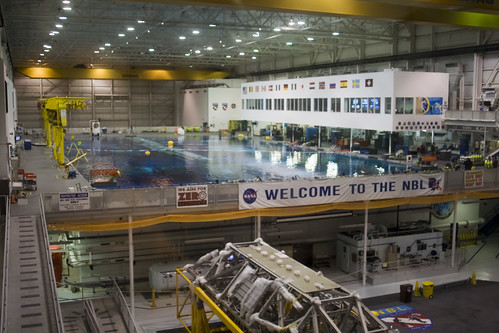CBS’ 60 MInutes special about the Bloom Box has thrown the internets into a tizzy. It appears that the Bloom Box is merely a higher-efficient fuel cell – electricity is generated through a reaction, triggered in the presence of an electrolyte, between fuel (natural gas) and an oxidant (in this case oxygen). What they shouldn’t have done was conflate zero-emissions power solutions with what this is: a better fuel cell.
http://cnettv.cnet.com/av/video/cbsnews/atlantis2/player-dest.swf
Watch CBS News Videos Online
Furthermore, replacing centralized power plants and distribution grid is all fine and dandy, but just doing that doesn’t make it green. At best you replace one large centralized emission source (which can arguably be more efficient through economies of scale) with thousands of smaller point sources of equal emission rate. The Bloom Box still runs on fossil fuels which we continue to rapidly deplete. Waste heat still is released, not to mention the caustic chemicals during manufacture.
Here’s an interesting comment from a skeptic:
CBS’s coverage was horrible. One, fuel cells aren’t emission free. They never mentioned emissions, but in the intro they talked about people working on emission free power, which strongly suggests that a fuel cell is emission free. A PEM type hydrogen fuel cell produces water vapor, and a CH4, or other carbon based fuel, SOFC, which is what the Bloom Box is, produces CO2 and water vapor. Methane powered SOFCs have been around for decades, and are more reliable and cheaper than PEM fuel cells, but still not strong at either low cost or reliability. Bloom claims to have solved those problems. Also, about the “sand”… that’s not sintered silicon dioxide as someone earlier in the comments suggested. That wouldn’t work for a SOFC. The reference to “beach sand” is clearly a reference to mozanite sand, a weathered pegmatite that’s rich in cerium and lanthanides and is found as a beach sand in a number of spots in the world. However, what Sridhar showed in the dish was not raw mozanite sand, it looked more like cerium oxide to me. So, we can conclude that he’s solved the grain boundary flow resistance problem that has plagued earlier attempts to use sintered cerium oxide as the solid electrolyte. This will allow it to run cooler and help with some of the reliability issues. It’s also quite a bit cheaper than yttria stabilized zirconia, which has been the main solid electrolyte ceramic used in SOFCs over the years. The “ink” is really more of a ceramic glaze, and the green one is probably a slurry of copper and cerium oxides and the black one is probably some sort of doped lanthanum manganite. SOFCs can run as high as 50% efficient, compared to maybe 35% for a really good gas fired turbine of the sort used for peaking plants. So, it’s not really “twice as efficient”, but it’s better than a turbine. Also, like I said, SOFCs don’t use platinum and never had. The STL oxygen generator that Sridhar worked on did use platinum, and the technology is similar to a fuel cell in reverse, taking electrical power and heat to make oxygen out carbon dioxide, but SOFCs don’t use platinum.
Sridhar’s reference to it being able to use solar is probably a reference to solar thermal catalyzed carbon neutral hydrocarbons. Straight hydrogen from something like biphotonic hydrolysis wouldn’t work in a fuel cell of this type.
So, if he can get is cost down to ~$1000/kW capacity, and his reliability can exceed the current record of 7K hours for an SOFC, he may be on to something. But, ultimately this is a small scale, high efficiency gas power plant, not a new source of energy. It’s like the Prius of power plants: more efficient, but it still needs chemical fuel. And, unless you live on top of a capped landfill and can extract methane from it, as eBay is doing, that fuel is probably coming in the form of natural gas. At a low enough cost per kW of capacity, this could be widely distributed and provide the same power at a somewhat lower carbon emission level than current natural gas power plants, and certainly lower than coal or oil power plants, but that’s all it is: a more efficient chemically fueled power plant.
Hats off to Sridhar who has apparently increased efficiency, minimized the use of platinum, and modularized fuel cells; but at best this is a bridge source of energy until we move fully off the carbon economy.










